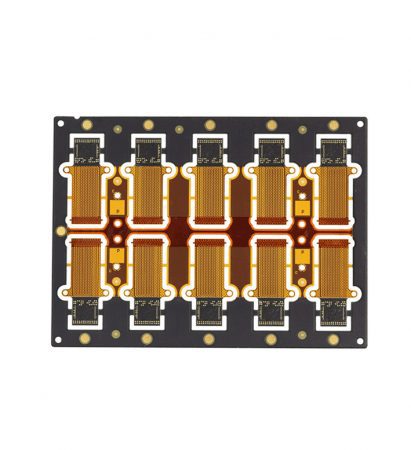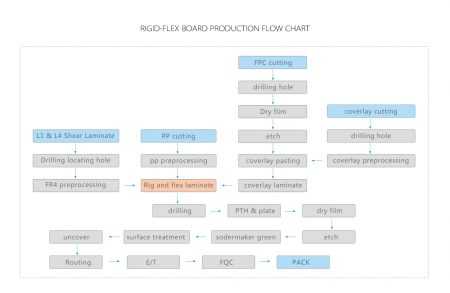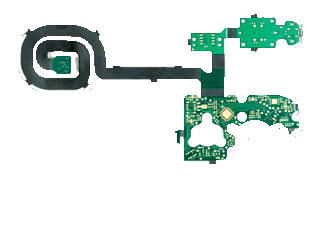- +86-755-23012705
- Building 3, Jinfeng Industrial Park, Fuyong Street, Baoan District, Shenzhen ,China
- [email protected]
When designing electronic products, selecting the right PCB (Printed Circuit Board) technology is crucial to ensuring optimal performance, reliability, and cost-effectiveness. As technology advances, designers have more choices to meet varying application needs. Among the most commonly used PCB types are Rigid PCBs and Rigid-Flex PCBs. Each has distinct advantages, and understanding the differences between them can help you choose the best solution for your product. In this blog, we’ll explore these two types of PCBs and help you decide which one is best suited for your needs.
Rigid PCBs are the most traditional and widely used type of printed circuit board. They are typically made from a solid, inflexible material like FR4, a fiberglass-based laminate, and are used to support and connect electronic components. Rigid PCBs come in a variety of configurations and are often used in applications where the circuit board does not need to bend or flex.
Rigid PCBs are known for their structural stability, which makes them ideal for products that require long-term use without bending or flexing. Their solid structure can withstand extreme environmental conditions, such as high temperatures and vibrations, making them suitable for automotive and industrial applications.
Rigid PCBs are relatively inexpensive to manufacture compared to other types of boards, like rigid-flex PCBs. Due to their simplicity and widespread production, they are often the most cost-effective option for mass production.
Rigid PCBs are widely used in consumer electronics, medical devices, telecommunications, and home appliances. The proven reliability and economic efficiency make them the go-to solution for most traditional electronic devices.
However, rigid PCBs do have limitations, especially when it comes to flexibility and space. For products that require compact, flexible designs or intricate shapes, rigid PCBs may not provide the best solution.

Rigid-Flex PCBs combine the benefits of both rigid and flexible PCBs. These circuit boards consist of rigid sections for mounting components and flexible sections that allow the board to bend or conform to specific shapes. A rigid-flex PCB can be folded, bent, or twisted to fit into smaller spaces or complex geometries, making it ideal for compact, high-performance applications.
Rigid-flex PCBs are designed to allow for higher component density in smaller spaces. The flexibility allows the board to bend and conform to product shapes, which is perfect for applications where space is limited, such as in wearable devices, smartphones, and medical implants.
The flexible portion of a rigid-flex PCB can absorb mechanical stresses like vibration or bending, reducing the likelihood of PCB failure in environments where shock and stress are common. This feature is highly valued in industries such as aerospace, military, and medical devices, where high reliability is critical.
Rigid-flex PCBs allow for more complex and creative designs. The ability to incorporate flexible areas means you can design circuits that fold or twist around corners, optimize space within tight enclosures, and create more streamlined products.
By integrating both rigid and flexible sections into a single PCB, you can eliminate the need for connectors and cables between separate PCBs. This reduces the overall size of the product and simplifies the assembly process, improving reliability and minimizing potential failure points.

The decision between rigid PCBs and rigid-flex PCBs largely depends on the specific requirements of your product. Here are some factors to consider:
If your product requires a small footprint or needs to fit into an irregular shape, a rigid-flex PCB might be the better option. This is particularly true for devices like wearables or compact electronics that need to fit into tight spaces. Rigid PCBs are better suited for products where a flat, fixed layout is sufficient.
For products that need to withstand harsh conditions—such as those in aerospace, medical devices, or automotive applications—rigid-flex PCBs offer superior reliability. Their ability to absorb shock and stress makes them ideal for environments where traditional rigid PCBs might fail due to vibrations, extreme temperatures, or mechanical stresses.
Rigid PCBs are cost-effective and straightforward to manufacture. If your product has simple circuit requirements and doesn’t need the added flexibility or compactness that a rigid-flex board provides, then a rigid PCB is likely the more economical choice. Rigid-flex PCBs, while offering greater design flexibility and reliability, come at a higher manufacturing cost due to their more complex design and production process.
Rigid PCBs are quicker and easier to produce, especially for large-scale production runs. If you have a tight production timeline or are manufacturing in large volumes, rigid PCBs might be the better choice due to their shorter turnaround times. On the other hand, rigid-flex PCBs typically have longer production cycles because of their design complexity.
If your product requires high component density or involves intricate shapes or unique form factors (such as bending around corners or fitting within small spaces), rigid-flex PCBs provide the design flexibility that rigid PCBs cannot. They enable more complex circuit layouts and innovative product designs.

Both rigid PCBs and rigid-flex PCBs have their strengths, and choosing the right type depends on your product’s specific needs. If your primary goal is cost-efficiency and your design doesn’t require flexibility or compactness, then a traditional rigid PCB may be the best option. However, if your product needs to be smaller, more durable, and capable of withstanding mechanical stress, then a rigid-flex PCB might be the ideal choice.
Understanding the unique characteristics of each PCB type—and how they align with your product’s requirements—will ensure that you make an informed decision, ultimately leading to a more successful and reliable electronic device.
Take Your Projects to New Heights with XPCB Limited
XPCB Limited offers top-notch PCB manufacturing, quick-turnaround prototyping, and turnkey PCBA services designed to make your projects shine. Count on us to bring your ideas to life with efficiency and quality. Your success matters to us, and we’re here to make your innovation journey smooth and rewarding.






XPCB Limited is a premium PCB & PCBA manufacturer based in China.
We specialize in multilayer flexible circuits, rigid-flex PCB, HDI PCB, and Rogers PCB.
Quick-turn PCB prototyping is our specialty. Demanding project is our advantage.
Tel : +86-136-3163-3671
Fax : +86-755-2301 2705
Email : [email protected]
© 2024 - XPCB Limited All Right Reserve
